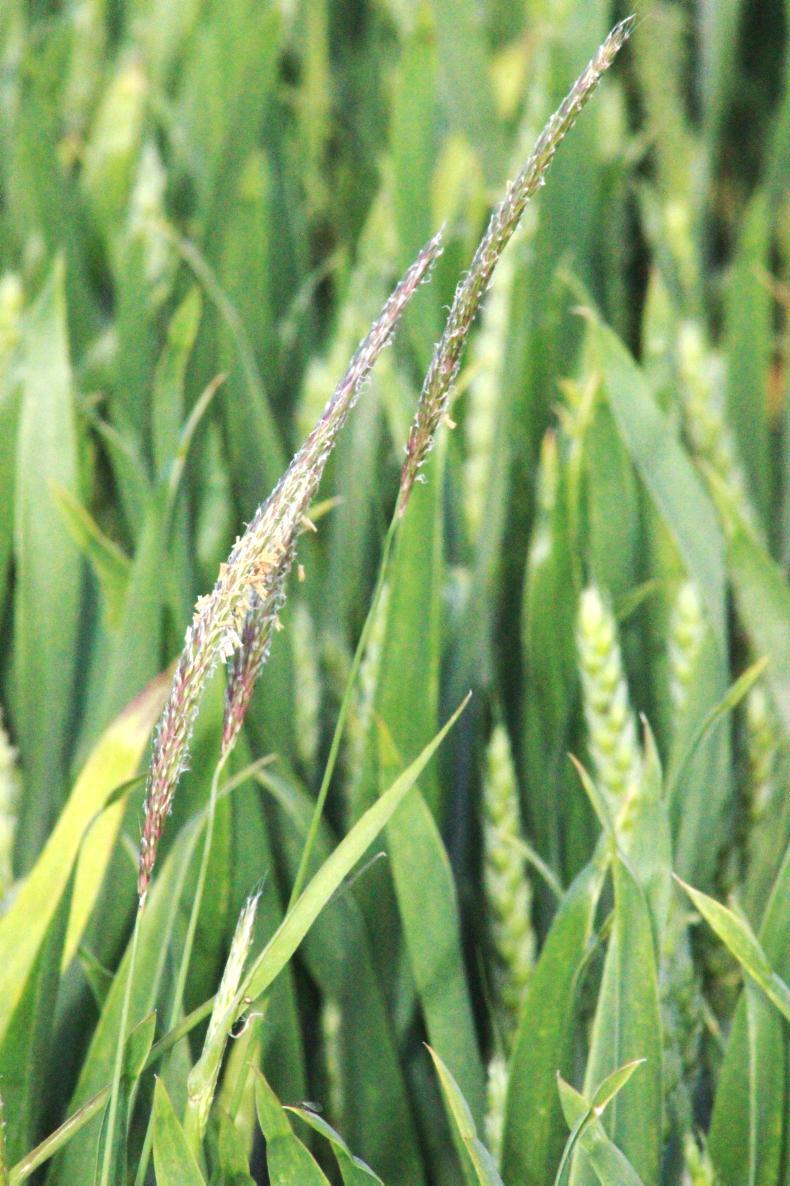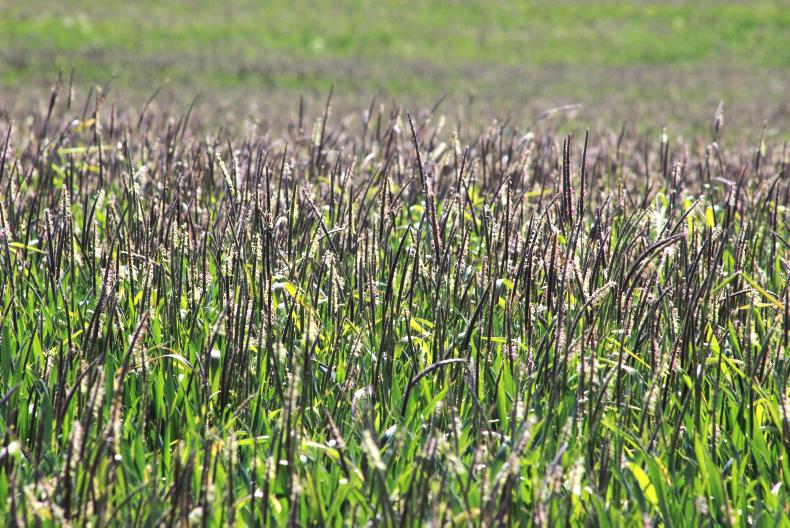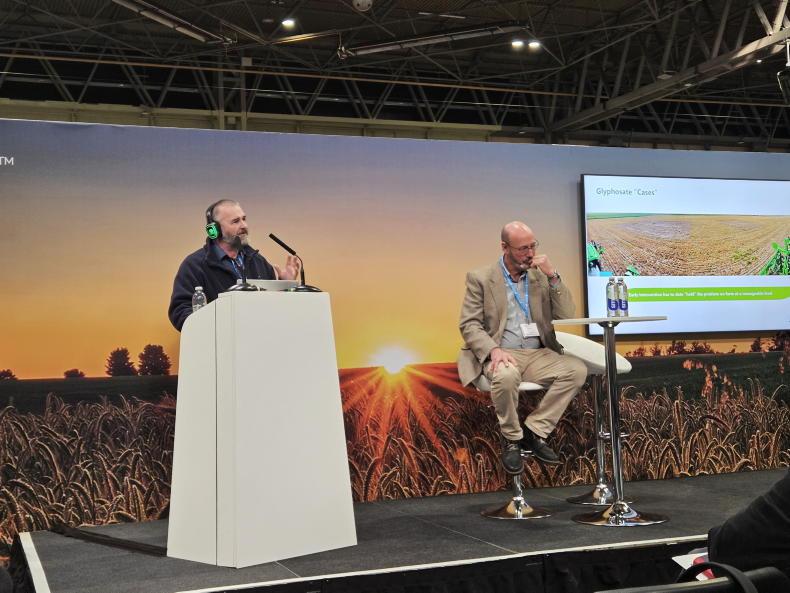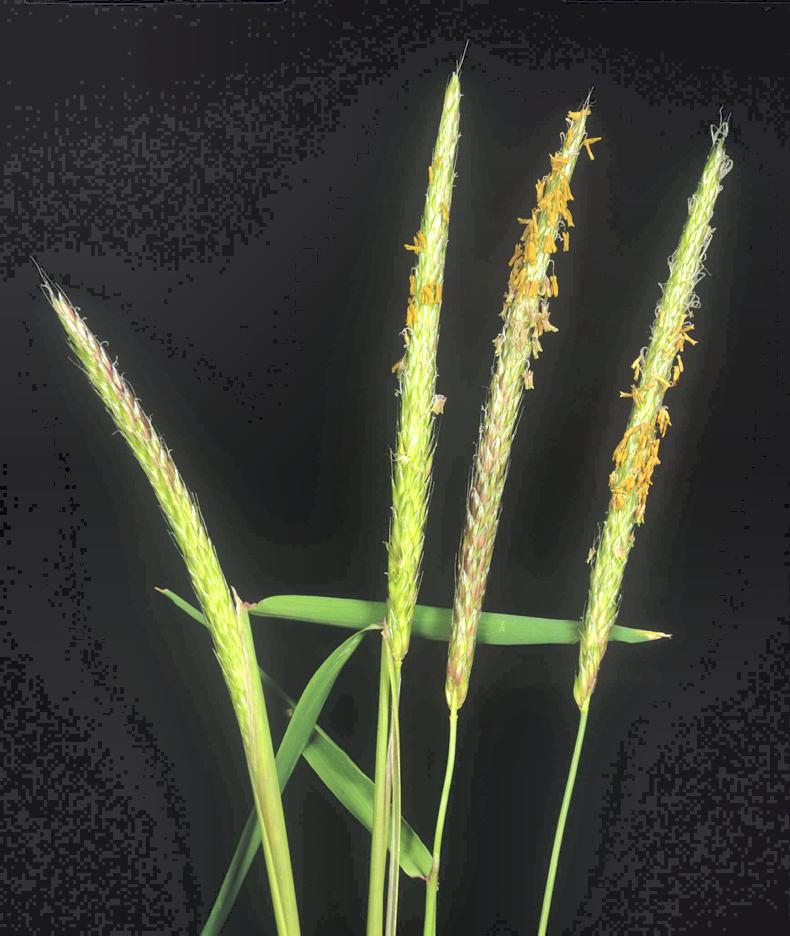Harvest coming fast: While many winter barley crops will not be ripe until next week, or even later, there will be a few growers cutting individual fields this week.
Crops appear to be ripening rapidly, faster than anticipated, and this may see more combine activity sooner than expected.
As crops ripen they seem to be thinning out a bit and weeds are coming up through crops. Sterile brome has been bad all year but now poppies have exploded and creeping thistles and scutch are very common too.
Black grass proliferating: This was a taboo issue a few years ago but it has become a mainstream problem in far too many tillage fields. The most worrying aspect is the relative indifference being shown by some growers to this weed.
This is a very aggressive yield damaging grass weed that will take over fields. It has developed resistance to most families of herbicide and glyphosate is the newest active to succumb. So there are no easy solutions once it gets in.
The grass is unique in that it is largely out-crossing, which means that it is breeding new varieties every generation. This enables it to continuously evolve and generate resistance.
Identification: Blackgrass will now be headed out in crops. The narrow tight heads are green initially but then turn a dark purple colour which gives it its name.
The heads carry multiple small seeds which are tightly bound to the stem but which fall off or thresh easily when ripe. Seeds are said to become viable very quickly into seed fill.

The slim singular heads of blackgrass in a wheat crop.
Many may not recognise this deadly grass weed so I have included a number of photos online if you look up tillage management.
This is a serious animal and it is very worrying to hear advisors report that a number of growers are choosing to do nothing about infested fields. Such indifference should be condemned by other growers as this grass weed is not anyone’s friend.
Infestation: Seeds come on to land by many routes, the most likely being English seed and grain sources from the UK that are used as seed. The next most likely route is machinery, especially imported combines and balers, and it is moving from our fields to others.
It is also possible that viable seeds can come in spent compost or in dung where contaminated straw sources were used.
Sensible growers must make sure that no machinery is shared between infested fields and clean fields.
This is most obvious at harvest time, ie combining and baling, but seeds will also travel in soil on cultivation equipment. Machines that go to infested fields should not come into yours.
Blowing down machines before they come onto your land would help reduce the risk but not eliminate it.
Indifference to this threat is close to a guarantee of infestation and within three years that can lead to a massive yield loss.
Spring planting will give temporary reprieve but this too may succumb to this weed in time. The biggest single advantage you can give the weed is early planting so that is another issue that must be grappled with.
Harvest coming fast: While many winter barley crops will not be ripe until next week, or even later, there will be a few growers cutting individual fields this week.
Crops appear to be ripening rapidly, faster than anticipated, and this may see more combine activity sooner than expected.
As crops ripen they seem to be thinning out a bit and weeds are coming up through crops. Sterile brome has been bad all year but now poppies have exploded and creeping thistles and scutch are very common too.
Black grass proliferating: This was a taboo issue a few years ago but it has become a mainstream problem in far too many tillage fields. The most worrying aspect is the relative indifference being shown by some growers to this weed.
This is a very aggressive yield damaging grass weed that will take over fields. It has developed resistance to most families of herbicide and glyphosate is the newest active to succumb. So there are no easy solutions once it gets in.
The grass is unique in that it is largely out-crossing, which means that it is breeding new varieties every generation. This enables it to continuously evolve and generate resistance.
Identification: Blackgrass will now be headed out in crops. The narrow tight heads are green initially but then turn a dark purple colour which gives it its name.
The heads carry multiple small seeds which are tightly bound to the stem but which fall off or thresh easily when ripe. Seeds are said to become viable very quickly into seed fill.

The slim singular heads of blackgrass in a wheat crop.
Many may not recognise this deadly grass weed so I have included a number of photos online if you look up tillage management.
This is a serious animal and it is very worrying to hear advisors report that a number of growers are choosing to do nothing about infested fields. Such indifference should be condemned by other growers as this grass weed is not anyone’s friend.
Infestation: Seeds come on to land by many routes, the most likely being English seed and grain sources from the UK that are used as seed. The next most likely route is machinery, especially imported combines and balers, and it is moving from our fields to others.
It is also possible that viable seeds can come in spent compost or in dung where contaminated straw sources were used.
Sensible growers must make sure that no machinery is shared between infested fields and clean fields.
This is most obvious at harvest time, ie combining and baling, but seeds will also travel in soil on cultivation equipment. Machines that go to infested fields should not come into yours.
Blowing down machines before they come onto your land would help reduce the risk but not eliminate it.
Indifference to this threat is close to a guarantee of infestation and within three years that can lead to a massive yield loss.
Spring planting will give temporary reprieve but this too may succumb to this weed in time. The biggest single advantage you can give the weed is early planting so that is another issue that must be grappled with.










SHARING OPTIONS